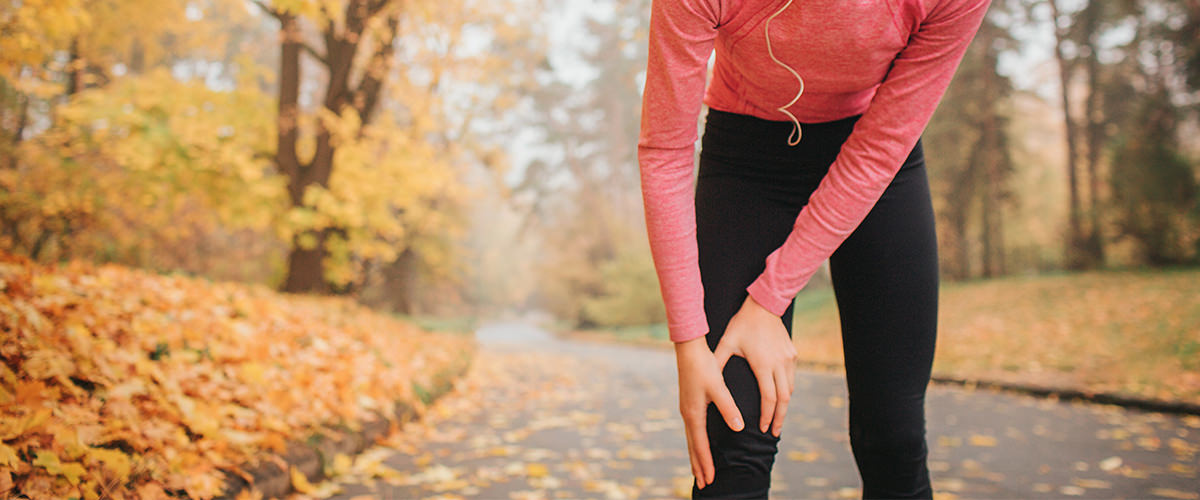Knee Pain: The Effectiveness of Osteopathic Treatment
Knee pain is common and can affect all age groups. This joint plays a fundamental role in mobility, as it is responsible for bending the leg. Certain illnesses or trauma can cause discomfort in this part of the body. Intervention from a health professional is then necessary to correct imbalances and restore flexibility. Osteopathy is an effective way of correcting knee pain.
What is a locked knee? Definition and symptoms
Gonalgia, a common condition
The knee is a complex joint in the human body, made up of menisci, ligaments, tendons, muscles and synovial sacs.
It connects the femur (thigh bone) to the tibia (one of the leg bones) and the patella (the bone at the front of the knee). Put under extreme strain, it ensures our stability and supports the rest of our body when it is in motion.
Gonalgia is pain located in the knee. It is common and can occur at any age. The onset can be sudden or gradual. The associated conditions have various origins: trauma, mechanical or inflammatory causes.
Painful symptoms associated with a locked knee
Depending on the type of condition, the symptoms may vary.
- Swelling, cracking and a sensation of instability and tearing when the cruciate ligament is ruptured.
- Joint swelling, stiffness and knee locking in the case of meniscus damage.
- Difficulty moving the joint and inflammatory pain in osteoarthritis.
- Sensation of crackling, creaking and reduced mobility in the case of patellofemoral syndrome.
- Etc.
The causes
Meniscus damage
This is one of the most common causes of a locked knee. The menisci are crescent-shaped cartilages that support and cushion the joint. The main sign of a meniscus injury is the severe pain felt in the knee after a quick or sudden movement.
The vast majority of meniscus injuries are caused by trauma. This is particularly the case for athletes who engage in activities that put heavy strain on the knees. It also occurs in certain professionals such as tilers, electricians and construction workers who carry out their work in a squatting position.
Finally, certain degenerative diseases such as osteoarthritis can lead to problems with the meniscus.
Locked patella
Patellar syndrome affects the cartilage of the kneecap. The pain generally occurs during flexion and extension of the limb and is due to a lack of tone in the quadriceps.
This locking condition may be traumatic or idiopathic: sitting down all day, running on a very hard surface (asphalt), climbing stairs, etc.
Patellofemoral syndrome
This is an irritation of the knee characterised by pain in the patellofemoral joint. It is caused by the kneecap rubbing against the femur, which can lead to cartilage wear and suffering.
It is one of the most common causes of knee locking in adolescents, particularly girls. The pain may cover the entire joint and intensify during sports.
Osteoarthritis
This is the most common cause of knee pain after the age of 60. Also known as gonarthrosis, it is caused by excess pressure that damages the cartilage in the knee. It is a particularly incapacitating disease for the elderly, as it also causes leg and hip pain.

Osteopathy as a treatment for knee pain
Different solutions to relieve these blockages
The treatments you use to relieve your pain must be tailored to your condition.
While you wait to see a doctor or therapist, you can take painkillers or anti-inflammatories, particularly if your knee is red or swollen. You can also apply ice packs to your joint and elevate your leg to reduce symptoms. Finally, we strongly recommend that you get some rest.
In the event of intense or persistent pain, consulting a health professional is essential. They will be able to identify the cause of your pain and provide the most appropriate solution. This is the case with an osteopath.
Please note: the vast majority of knee pain does not require surgery. Surgery should be the last resort.
A session with an osteopath for your knee injuries
During an emergency or follow-up consultation, the osteopath always makes sure that they have all the information they need to optimise your treatment. They will assess your medical history and then carry out palpation tests to identify the precise source of your pain.
They will then work out the treatment best suited to your condition. Using methodical movements, the therapist will reduce your pain while taking pressure off the knee joint. The aim is to restore equilibrium to your body’s structures and give you back as much flexibility as possible in your movements.
Your professional’s advice on preventing blockages
The osteopathic approach is curative, but also preventive. At the end of each session, your osteopath will give you advice on how to prevent the risk of knee recurrence.
There are a number of measures you can take to protect your knees. Here are a few examples:
- Strengthen the muscles around this joint (quadriceps, hamstrings, gastrocnemius muscles, etc.) with moderate exercises.
- Avoid wearing high heels, which alter the alignment of your body’s structures and increase the work involved in stabilising the knee joints.
- Opt for an anti-inflammatory diet (omega-3, turmeric, etc.), particularly if you suffer from osteoarthritis.
- Adjust your posture when travelling or at work.
- Wear knee braces when playing sports or working in a job that puts strain on the knee.
This natural method is a real ally in relieving knee pain. As well as providing you with an emergency solution, your practitioner can also help you improve your daily reflexes to protect your joints.
Are you suffering from knee pain? Our osteopaths offer emergency consultations at your home or workplace, 7 days a week, throughout the island of Montreal.